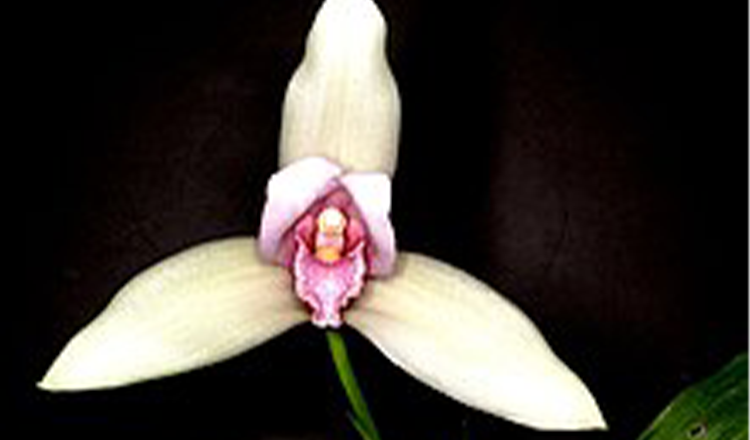Lycaste

Lycaste, abbreviated as Lyc in horticultural trade, is a genus of orchids that contains about 30 species with egg-shaped pseudobulbs and thin, plicate (pleated) leaves.
Lycaste flowers, like all orchid blooms, have three petals and three sepals. The petals are typically yellow, white, or orange, and the sepals are yellow, orange, green, or reddish brown. The petals and sepals may be marked sparsely or densely with red, reddish purple, purple, or reddish brown spots. The lip (ventral petal) may be very similar to the other two petals, as in Lycaste aromatica or Lycaste brevispatha, or colored quite distinctively, as in several subspecies and varieties of Lycaste macrophylla.
1Most Lycaste flowers are medium in size, averaging about 5 to 10 cm, but Lyc. schilleriana is 16–18 cm across. Some Lycaste blooms have a unique fragrance – the scent of Lyc. aromatica has been variously described as cinnamon or clove. The blooms of the species Lyc. cochleata, consobrina, and cruenta also have a pleasant scent.
The World Checklist of Selected Plant Families, maintained by the Royal Botanic Gardens at Kew, is recognized by the American Orchid Society as the definitive authority on orchid taxonomy. The Checklist currently acknowledges 31 species of Lycaste, 3 natural hybrids, 2 subspecies (and 1 nominate subspecies), and 1 variety. Orchid growers and orchid collectors, who tend to be taxonomic “splitters” more often than “lumpers” (see lumpers and splitters), recognize additional subspecies and varieties of Lycaste, as well as alba (white) forms of several species.
